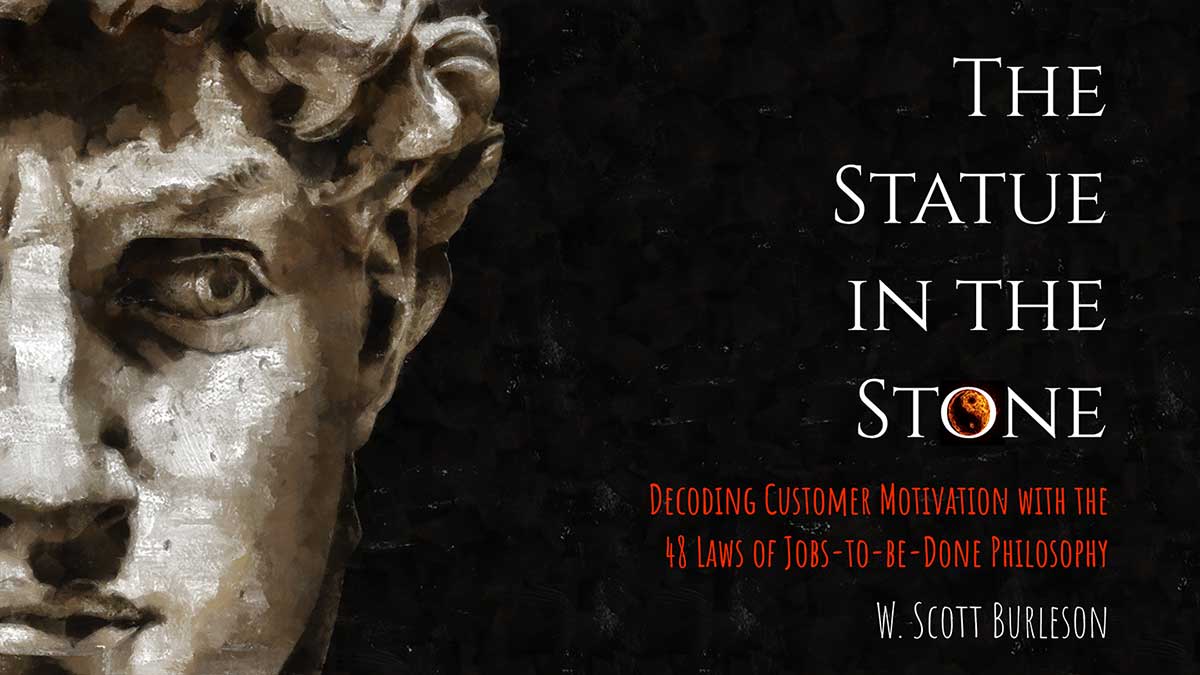This is also known as “attrition warfare,” and is characterized by competitors applying the same tactics. It’s also characterized by everyone losing, even the winners. Keep your productivity and quality initiatives… but understand that by themselves, these initiatives put you in a race to the bottom. Better to focus on what your competitors are not doing well. For B2B companies today, this is understanding customer needs before developing new products for them.
More in white paper, Guessing at Customer Needs
We recently compiled a dozen short case stories of B2B clients doing impressive front-end work. (See www.aimcasestories.com.) What surprised us was how different each case was. The NPD project teams all used their quantitative Preference interviews to construct Market Satisfaction Gap profiles… and we were struck with how unique market segments can be. Truly, each one tells a story: Until you do quantitative interviews, though, that story goes untold.
More in article, Market Satisfaction Gaps… your key to B2B organic growth
Over the years, we’ve seen business leaders question the employee time and airfare bills needed to interview customers in the front-end of innovation. But how much R&D and marketing was squandered developing a product that made customers yawn? That’s a question that should probably be asked more often.
More in white paper, Guessing at Customer Needs
Does this seem like terrible advice? Especially in our age of hyper-attention to quarterly results? But if you focus too much on business results, you’ll degrade them over time. Why? You must also focus on capabilities. Steven Covey cautioned us to balance P (production or “results”) with PC (productive capability). Sadly, many business leaders forget the “capabilities” part. One capability is understanding the needs of your customers… so you can develop better products… for better business results.
See The 7 Habits of Highly Effective People, by Steven Covey
Market Satisfaction Gaps (MSG) come from teams’ quantitative interviews, and are reliable evidence of which outcomes customer do—and do not—want “fixed.” When you require MSGs as the “admission ticket” for projects to enter the costly product development stage, 3 things go away: 1. Confusion (misunderstanding customer needs and their priorities), 2. Bias (altering customer needs to better fit our pre-conceived solutions), and 3. Filtering (cherry-picking customer needs to match those we hoped to hear.)
More in article, Market Satisfaction Gaps… your key to B2B organic growth
Jeff Bezos believes this is a more important question than “What’s going to change in the next 10 years?” In the world of new product development, we find that customer outcomes—desired end results—tend to be more stable over time than supplier solutions. So instead of validating your solutions during customer interviews, seek to uncover and understand the most important, unmet customer outcomes. Then pursue these stable targets with your solutions.
More in video, New Product Blueprinting—the Future of B2B Innovation
Dan Adams: Congratulations! How long have you been working on this project? Scott Burleson: Thanks! I started working on a book about 14 years ago. It was originally going to be a comprehensive guide for product managers. But the deeper I went, the more that I realized that my true passion was much more about ... Read More
Peter Drucker said there are only two purposes of business—innovation and marketing—and all other business functions are simply costs. Funny thing is that the unit of innovation and the unit of marketing are the same: customer outcomes. If you don’t understand customer outcomes—their desired end-results—you will neither innovate properly to satisfy those outcomes, nor effectively promote your solutions to them. A clever gentleman, that Mr. Drucker.
More in e-book, Leader’s Guide to B2B Organic Growth
540 B2B professionals—with over 10,000 years of combined experience—responded to our research survey. Here’s what we learned: They were much more eager to improve growth drivers for understanding customer needs (e.g. customer interviews) than meeting customer needs (e.g. gate-review processes). Of 24 growth drivers, what were they most eager to improve? Market insight.
More in article, What Drives B2B Organic Growth? Now we know
We see three areas where leaders can have a greater negative impact on innovation than positive: 1) organizational friction (travel bans, spending freezes, hiring delays, excessive re-orgs, etc.) that slow innovation to a crawl, 2) spreading too few resources over too many projects so that nothing moves briskly, and 3) short-changing the front-end of innovation, so that a clear picture of customer needs is lacking. Companies pay a heavy price for keeping such leaders in place.
More in article, Accelerate New Product Innovation
B2B companies can do 3 things with customer needs: guess, understand or model them. This article explores modeling and its 3 benefits: 1) It’s much cheaper and faster than starting with a prototype, 2) you’ll understand customers’ next-best alternatives better… so you can optimize product pricing, and 3) customers will be much more engaged. ... Read More
“Proven right” breeds confirmation bias; “be right” inspires a search for truth. In new product development, “proven right” seeks to validate the supplier’s ideas; “be right” explores customers’ worlds seeking what others have missed. “Proven right” results in squandered R&D spending and missed opportunities; “be right” in delighted customers, premium pricing, and pleasant financial review meetings.
More in e-book, Leader’s Guide to B2B Organic Growth
Imagine you just launched your new product and the market responded with… one big collective yawn. Was it a poorly orchestrated launch? Perhaps, but it’s more likely your launch was doomed a couple of years earlier by poor front-end work. Our research shows five of six B2B product development teams lack a clear understanding of market needs before conducting B2B-optimized VOC. Without this insight, your launch might be putting lipstick on a pig.
More in article, B2B Product Launch: How to get it right
Voice-of-customer interviews don’t really work unless the customer trusts you. You’ll tell your doctor, lawyer or therapist everything they need to know so they can help you. But only if you trust them. The same is true for your customers when you seek information to innovate for them. You build trust with your credibility, reliability, and a sincere interest in their well-being.
More in e-book, Leader’s Guide to B2B Organic Growth













